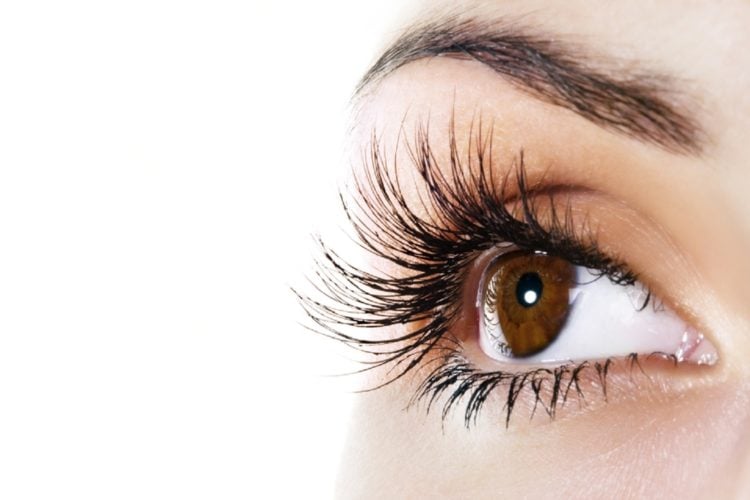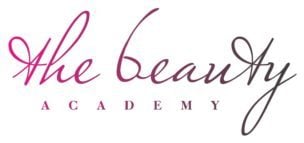Which lash shield size should I use for Lash Lift treatments?
Lash Lift is certainly one of our most popular courses and highly lucrative earning you around £30-£45 per treatment. Many clients are moving away from the continued maintenance cost of lash extensions seeking a more natural option as the minimalism trend comes into make up and skincare this year. Lots of students complete our Accredited Courses to learn Lash Lift Skills but one tricky aspect to master is selecting the correct lash shield size and how to correctly fit the lash shield as it certainly takes time and practise to do this with confidence. Our blog covers best practice on selecting the correct size shield plus top tips for a successful lash shield application…

Lash lifting shields are usually created from flexible silicone shields created with a special shape to sit comfortably on the upper eye lid purposely for lash lift treatments. Lash lift treatments work a llittle like the lash perming treatments of the past, except rather than creating curly, fluffy lashes; the aim is to instead lift lashes to create the illusion of greater lash length with a soft curl upwards for a youthful, open-eyed look.
Lash shields are usually available in various sizes from small, medium up to large with some brands offering sizes in-between to give a more tailored fit for your clients.
Selecting the correct lash shield size is essential to achieving the perfect lifted result your clients desire. Too large a shield and the lashes may not lift, too small and the lashes may become too deeply curled or the ends of lashes may be distorted in shape with a kink. Usually the smaller the shield size, to greater the lift and the more dramatic the result. That said, achieving the result is down to ensuring the client’s natural lashes sit correcty on the lash shield working with their natural lash length to help determine the most suitable shield size.
When sizing up the shield, it helps to first apply an under eye pad and secure lower lashes down out the way. Then measure the shield up against the natural lashes before you get to applying adhesive.
Hold the clean shield against the upper lashes and look at how far up the natural lashes will sit on the shield. You’re ideally aiming for the natural lashes to reach all the way across the shield to the top of the shield but you don’t want lashes poking off the end.
If lashes are too long for the shield, go up a size. If lashes are only sitting halfway up the shield, go down a shield size. As a general rule of thumb, most clients will use either a small or medium shield as most clients have natural lashes around 8-11mm in maximum length. Most client’s also want the most dramatic of results which are usually yielded by a smaller shield size, although you should discuss this fully with your client to ensure you understand their expectations of treatment.
It certainly takes time and practice to perfect applying the lash shields. You want to get them as close to the lash line (it might almost feel like you’re on top of the lashes but with the adhesive when you pull them up you’ll get used to seeing the gentle pull lifting them up and over the shield so lashes won’t be trapped). It can take up to 10-20 sets before you feel totally confident with the application of the shields, feeling all fingers and thumbs at first.
A good tip is to curl your hands and gently nudge your client at the temples using your gathered knuckles each time you ‘go on’ to work on your clients eyes so they don’t jump everytime you come on and off as they will have their eyes closed throughout and it can help application of the shields if they are a little nervous.
Often clients are nervous on their first treatment also and you’ll find it much easier to apply on their follow up treatments as they start to feel more relaxed as they get familiar with the treatment process. It is worth practising application of shields just on friends and family (without necessarily then doing the full treatment), just to get the hang of it.
Common issues when lash lifting…
The lashes have a kink of the ends of the lashes
You have used too small a lash shield. Next time size up to the next shield size or if you want a tighter lift still, don’t apply the product all the way to the ends of the lashes although this won’t allow the lashes to curl back inwards to give a more natural lash shape, so bear that in mind for those clients with larger, more prominent eyes where the ends of lashes are more naturally more apparent and on show.
The lashes have gone frizzy or too deeply curled
This could suggest the lashes are overprocessed. This can occur when not all of the lash lift product has been removed so essentially the lashes continue to process lifting somewhat beyond the initial treatment (usually up until the client fully washes their face or until all product has processed). it can also occur when the development time was too long either in error or for the client’s lashes due to poor lash condition or having a previous lash lift/perm treatment too recently. It can also occur if you use too small a shield giving too tight a curl for the result the client expressed they desired. Some client’s want a more natural looking lift (more like a J curl if you think in terms of false lash shapes) so may be better with a medium or large shield depending on their natural lash length. Size up to the next lash shield size next time.
The lashes haven’t lifted
This can occur for several reasons. It may be that if you removed eye make up before the treatment, that lashes were too wet and so the product could not work correctly to break down the bonds holding the natural lash shape. It may be that you removed the products too soon stopping them from processing correctly or it may be that the lash shield size selected was too large, size down next time.
The lash shield lifts up at the corners
You may need to trim the lash shield at the outer corner side to achieve a better fit for your client. You might also like to consider use of a small amount of micro-pore tape to help hold the shield down better but ensuring none of the lashes are trapped in the tape, of course!
The shield is slipping
You might like to consider using a small strip of micro-pore tape along the lash line on the upper lid as the shield adheres much better to the tape rather than skin for some clients. It is makes it much easier to clean up following treatment as you don’t need to worry about removing lash adhesive from the client’s upper eye lid skin, it will come away simply when you remove the small strip of tape. You can also use two small strips of micro-pore tape applied vertically to help ‘lift’ and hold any looser skin on the eye lid such as for mature clients making it much easier to get the shield positioned on the lash line.
The client doesn’t like the result
Communication is the key both before and after the treatment. Most disatisfaction comes from client’s not understanding the realistic treatment outcome for their own lashes so always take time to have a thorough consultation and to visually and manually assess your client’s natural lashes prior to treatment. You must manage a client’s expectations of the treatment and how long results will last. Ensure they are well versed in the correct homecare before they leave you to avoid lash mishaps after treatment or short longevity to the results.
If the lift is too strong, unfortunately clients just have to wait for this to drop naturally although allowing lashes to get wet earlier than the recommended so for the client to take a shower after the treatment. This may help restore the original keratin bonds of the lash hairs to reverse or reduce the treatment result, although this is not guaranteed. Lash results that are too strong are usually due to issues of overprocessing of lashes or too small a lash shield used, all things you can note on their record card and ensure you consider for any future treatment.
Use of lash serums or castor oil are great to help nourish the lashes, maintain results, help restore natural keratin bonds s the result drops more naturally and improve the lash condition ahead of any future treatments also.
Online Ultimate Lash & Brow Artist Training Package
Certificate
Online
£429.00
Ultimate Lash & Brow Artist Training Package
Diploma
6 days
£899.00
Online Lash Lift & Tint Training Course
Certificate
Online
£99.00
Lash Lift & Lash Tinting Training Course
Diploma
1 day
£229.00
First published 7th January 2021. Updated 3rd August 2023.










